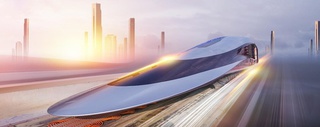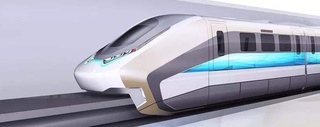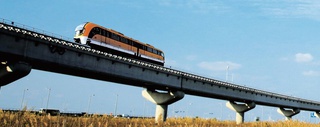Maglev vs. Airplane, Shinkansen & Car
As we are nearing the completion of the first stage of the Chuo Shinkansen, we take a look at the raw data to find out which will be the fastest way to commute between Tokyo and Nagoya in 2027, and later on between Tokyo and Osaka.
Can Maglev Be Faster Than Flying?
This is a fascinating question and it requires a detailed answer. The data we have collected is also being compared to the conventional high-speed rail that is currently operating between Tokyo, Nagoya and Osaka as well as a regular car traveling between these cities.
Before comparing the travel times and the average speeds these different vehicles achieve between these cities, we take a look at the distances. All four options have to cover vastly different routes to get to the destination. The Chuo Shinkansen (maglev) is getting a new passage through the Japanese Alps, which will be shorter than the traditional rail line.
Tokyo to Nagoya Distance:
- By Car: 347 km (216 miles)
- By High-speed rail: 341 km (212 miles)
- By Airplane: 312 km (194 miles)
- By Maglev: 286 km (178 miles)
Tokyo to Osaka Distance: - By High-speed rail: 514 km (319 miles)
- By Car: 494 km (307 miles)
- By Maglev: 438 km (272 miles)
- By Airplane: 419 km (260 miles)
It's visible from the data that the airplane has an advantage over longer distances, but how does that translate into average speed?
Tokyo to Nagoya Average Speed: - By Car: 84 km/h (52 mph)
- By High-speed rail: 220 km/h (137 mph)
- By Airplane: 390 km/h (242 mph)
- By Maglev: 429 km/h (267 mph)
Tokyo to Osaka Average Speed: - By Car: 74 km/h (46 mph)
- By High-speed rail: 217 km/h (135 mph)
- By Maglev: 392 km/h (244 mph)
- By Airplane: 474 km/h (295 mph)
So does that make maglev faster than an airplane? While on the longer trip between Tokyo and Osaka maglev seems to be slightly slower than an airplane it's important to note that most people travel between city centers and not airports. This can make traveling by maglev several hours (!) quicker than flying. There is also no queuing for security checks or the need to be at the airport an hour or two before the flight. Another noteworthy statistic from this data is that driving from Tokyo to Osaka takes six times longer than taking the maglev train in the future between the same cities.
Top Cruising Speed: - Boeing 787 Dreamliner: 903 km/h (561 mph)
- L0 Series Maglev: 505 km/h (314 mph)
- N700 Series Nozomi Train: 300 km/h (185 mph)
- Car: 120 km/h (75 mph) - the speed limit on (selected) Japanese motorways
Source of Data:
Real flight data based on an average of 14 flights by Japan Airlines from Tokyo to Nagoya and Nagoya to Tokyo, Boeing 787-8 (JA837J / JL208) Tokyo to Nagoya flight distance: Tokyo to Nagoya 341 km, Nagoya to Tokyo 282 km, average: 312 km.
Real flight data based on an average of 14 flights by Japan Airlines from Tokyo to Osaka and Osaka to Tokyo, Boeing 737-846 / 787-8 (JAL221 / JA848J) Tokyo to Osaka flight distance: Tokyo to Osaka 432 km, Osaka to Tokyo 405 km, average: 419 km.
High-speed rail: Tokyo Station to Nagoya Station and Shin-Osaka Station with the Nozomi Shinkansen, which is the fastest train on this route.
Driving by car is calculated by going at the speed limits without traffic.






